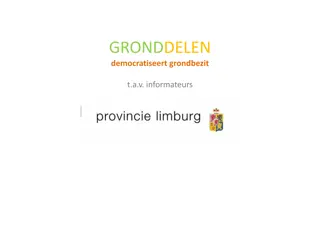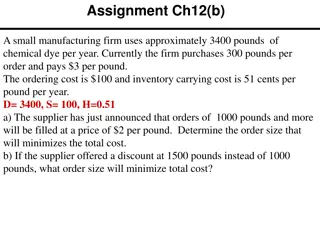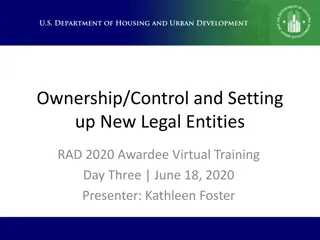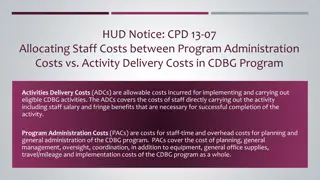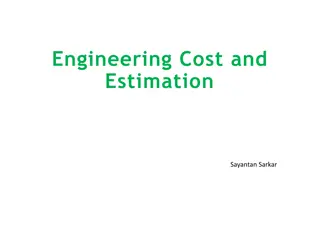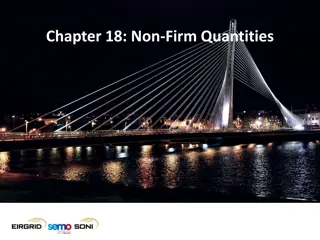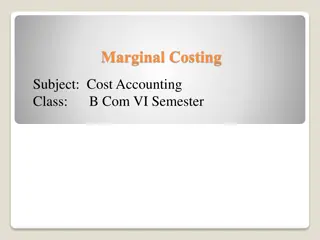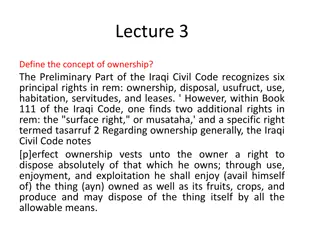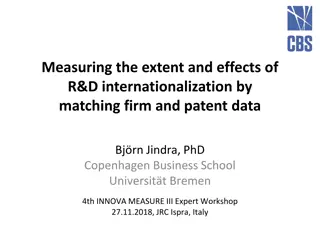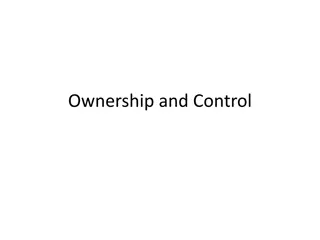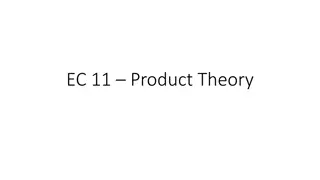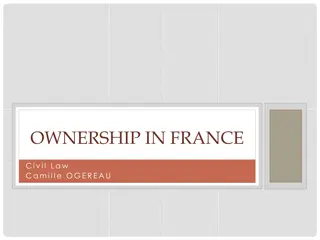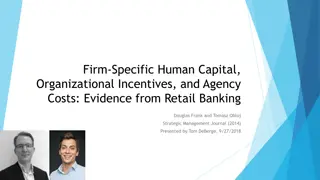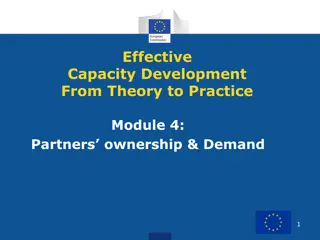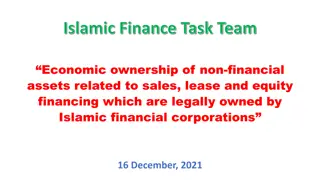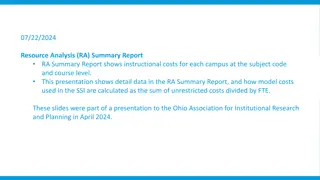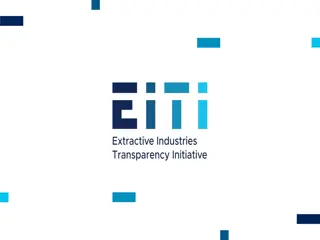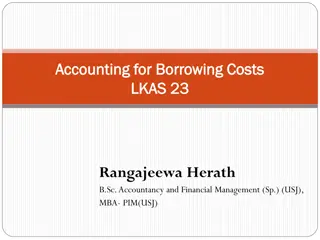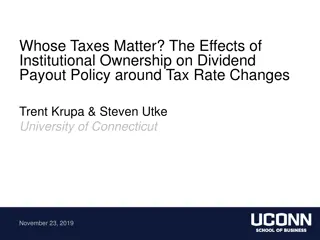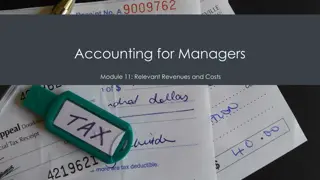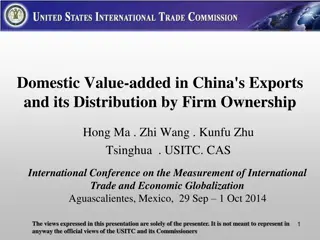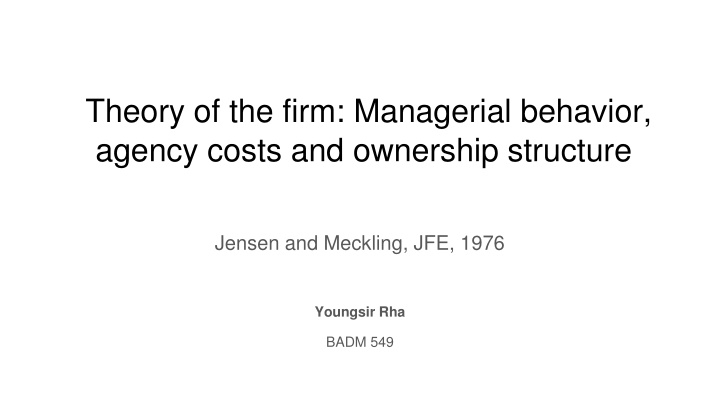
Theory of the Firm: Ownership Structure & Agency Costs
This paper presents a theory of the ownership structure of firms integrating agency, property rights, and finance. It discusses how firms manage financing through debt or equity markets to minimize agency costs and achieve equilibrium through contracts among individuals.
Download Presentation

Please find below an Image/Link to download the presentation.
The content on the website is provided AS IS for your information and personal use only. It may not be sold, licensed, or shared on other websites without obtaining consent from the author. If you encounter any issues during the download, it is possible that the publisher has removed the file from their server.
You are allowed to download the files provided on this website for personal or commercial use, subject to the condition that they are used lawfully. All files are the property of their respective owners.
The content on the website is provided AS IS for your information and personal use only. It may not be sold, licensed, or shared on other websites without obtaining consent from the author.
E N D
Presentation Transcript
Theory of the firm: Managerial behavior, agency costs and ownership structure Jensen and Meckling, JFE, 1976 Youngsir Rha BADM 549
Objective and Summary Previously, there was no established theory of firms. A firm was treated like a black box. This paper develops a theory of the ownership structure of the firm by integrating the theory of agency, property rights, and finance. Ownership structure: how is firm financing done through debt or equity markets? (ratio) Explains ownership structure of the firm as an institution designed to limit (minimize) agency costs.
Just like any organizations or institutions, a firm is a form of legal fiction which serves as a nexus for contracting relationships among individuals. New definition of the firm The firm is not an individual. It is a legal fiction that brings the conflicting objectives of individuals into equilibrium via contracts. Thus, the behavior of a film is like that of a market, not a person with motivations and intentions.
equity debt Theory of agency Theory of corporate ownership structure Theory of property rights Theory of property rights Coase, Alchain, Demsetz Specification of individual rights via contracts determines how costs and reward will be allocated among the participants in an organization. So individual behavior will depend upon the nature of these contracts. This paper focuses on the behavioral implications of the property rights in the contracts between the owners and managers of the firm.
equity debt Theory of agency Theory of corporate ownership structure Theory of property rights Theory of agency Adam Smith, The Wealth of Nations (1776): the managers of a firm are agents who manage money of others, so they may exhibit negligence and profusion. Agency relationship is a contract under which one or more persons (principals=shareholders) engage another person (agent=manageres) to perform some service on their behalf via delegation of decision-making authority. Because both principals and the agent are utility maximizers, the agent will not always act in the best interests of the principal. The principal will establish incentives for the agent and incur costs (monetary and non-monetary) such as monitoring costs by the principal, bonding costs by the agent, and residual loss. (NB: monitoring includes rewards and routines) The sum of these three costs= agency costs.
equity debt Theory of agency Theory of corporate ownership structure Theory of property rights Theory of agency: Focus of this paper Investigates the incentives faced by the parties and elements of determination of the equilibrium contractual form that characterizes the relationship between the agent and the outside equity and debt holders (principals) Conflicting objectives of individuals of a firm are brought into equilibrium through contracts Most firms have a mixed financial structure, employing both outside equity and debt (mixed financial structure) Agency costs are generated by outside claims of the firm 1) outside equity 2) debt
equity debt Theory of agency Theory of corporate ownership structure Theory of property rights Agency costs of outside equity CASE 1: Wholly owned firm managed by owner CASE2: Owner-manager sells equity to outside shareholders The manager (=owner) owns 100% of the residual claims on a firm. The manager will make decisions that maximize her own utility (both pecuniary and non-pecuniary). the optimum mix (in the absence of taxes) of the pecuniary and non-pecuniary utilities (benefits) is achieved when the marginal utility from an additional dollar of expenditure is equal for each non-pecuniary item and equal to the marginal utility from an additional dollar of after-tax purchasing power (wealth) divergence between two parties interests will incur agency costs. If the manager owns 95% of the stock, he will expend resources until the marginal utility from 1 dollar of expenditure equals the marginal utility of an additional 95 cents in general purchasing power (his share of wealth reduction), and not one dollar. As the owner-manager s fraction of the equity falls, he will be encouraged to spend more resources. Also, the minority shareholders will expend more resources for monitoring the manager s behavior Thus, the wealth costs to the owner of obtaining additional cash in equity markets rise as his fractional ownership of the firm s wealth fails.
equity debt Theory of agency Theory of corporate ownership structure Theory of property rights Theorem: How does it affect agency costs? In the case the owner-manager takes a proportion (a) of the firm s value, For a claim on the firm of (1-a), the outsider will pay only (1-a) times the value he expects the firm to have, given the induced change in the behavior of the owner-manager. The agent (manager) bears the agency costs of equity Why? In selling equity shares, prospective buyers will realize the agency problem makes the shares worth less and will pay less for them. They will consider the firm's value given the new ownership structure. So, it is in the agent's interest to devise a contract that limits the agency costs of equity.
equity debt Theory of agency Theory of corporate ownership structure Theory of property rights Bottom line Agency cost is non-zero (there are costs related to the separation of ownership and control) Agency relationship is non-optimal The first-best world is not obtainable A manager in a firm will choose a (second-best) set of activities for the firm so that the total value of the firm is LESS than it would be if he/she were the sole owner. This outcome is independent of whether the firm operates in monopolistic or competitive product markets.
equity debt Theory of agency Theory of corporate ownership structure Theory of property rights Agency costs of debt Having the manager become the sole equity holder will not incur agency costs associated with outside equity. But why don t we observe large corporations individually owned with a tiny fraction of the capital supplied by the entrepreneur in return for 100 % equity and the rest simply borrowed? (1) Incentive effects If the investment turns out well, the manager captures most of the gains. If the investment fails, the creditors bear most of the costs. Insulates the manager from the full impact of decisions. limits their losses in bad scenarios. Incentive effects associated with debt: owner-managers have a strong incentive to engage in excessive risk-taking (risky investments).
equity debt Theory of agency Theory of corporate ownership structure Theory of property rights Agency costs of debt (Cont d) (2) Monitoring and bonding costs Can devise provisions to protect the bondholders from incentive effects. But there are costs of writing incredibly detailed provisions and costs of enforcing them. Monitoring costs Monitoring costs are imposed on the owner-manager. Thus, it is in his interest to find a way to do monitoring at the lowest cost. Bondholders may use financial statements as a means of monitoring. Managers can provide bondholders with this information at a lower cost. The cost of providing this information is called Bonding costs Collateral is another example of bonding.
equity debt Theory of agency Theory of corporate ownership structure Theory of property rights Agency costs of debt (Cont d) (3) Bankruptcy and reorganization costs This is why debt doesn t completely dominate capital structures. It is costly to write contracts representing claims on a firm regarding bankruptcy Bankruptcy is not costless because it involves an adjudication process that consumes some of the remaining value of the firm assets. Reorganization costs: legal and professional fees and expenses
equity debt Theory of agency Theory of corporate ownership structure Theory of property rights Who bears the agency costs of debt? The owner-manager bears the entire wealth effects of the agency costs of debt and he capture the gains from reducing them. (same as agency costs of outside equity) Thus, agency costs from debt discourage the use of corporate debt. What encourages the use of debt? Tax subsidy on interest payments.
equity debt Theory of agency Theory of corporate ownership structure Theory of property rights A theory of the corporate ownership structure Integrates the concepts of outside equity and debt into the theory of corporate ownership. ownership structure highlights the fraction of the equity held by the manager. Three variables to be determined about a firm: 1) inside equity (held by the manager) 2) outside equity (held by any outsiders) 3) debt (held by outsiders)
equity debt Theory of agency Theory of corporate ownership structure Theory of property rights Optimal ratio of outside equity to debt: 2/(2+3) Three variables to be determined about a firm: 1) inside equity (held by the manager) 2) outside equity (held by any outsiders) 3) debt (held by outsiders) Retains the arguments that 1) in an efficient market, prices of debt and outside equity will reflect unbiased estimates of monitoring costs and redistributions which the agency relationship engenders, and 2) the selling owner-manager will bear these agency costs. Therefore, from the owner-manager s standpoint, the optimal proportion of outside funds to be obtained from equity compared to debt for a given level of internal equity is the one that results in minimum total agency costs. explains ownership structure of the firm as an institution designed to limit agency costs.
equity debt Theory of agency Theory of corporate ownership structure Theory of property rights Effects of the scale of outside financing: 2+3 Three variables to be determined about a firm: 1) inside equity (held by the manager) 2) outside equity (held by any outsiders) 3) debt (held by outsiders) The larger the firm becomes (big scale outside financing), the larger are the total agency costs because it is likely that the monitoring function is inherently more difficult and expensive in a larger organization.
equity debt Theory of agency Theory of corporate ownership structure Theory of property rights Optimal amount of outside financing Risk and the demand for outside financing Determined by the intersection between the demand by the manager for outside financing (marginal value of the increased diversification) and marginal agency cost . A Pareto optimal choice: there is no way to reduce agency costs without making someone worse off. anagers who are risk-averse will practice diversification and portfolio management and become a minority stockholder of the firm he manages.
Conclusion Contractual relations are the essence of the firm, not only with employees but with suppliers, customers, creditors, etc. Agency costs = the monitoring expenditures by the principal + the economic bonding expenditures by the agent + the residual loss Positive monitoring and bonding costs are unavoidable in agency relationships. Agency costs are as real as any other costs. There are strong incentives for individuals to minimize agency costs. Explains ownership structure of the firm as an institution designed to limit (minimize) agency costs.

